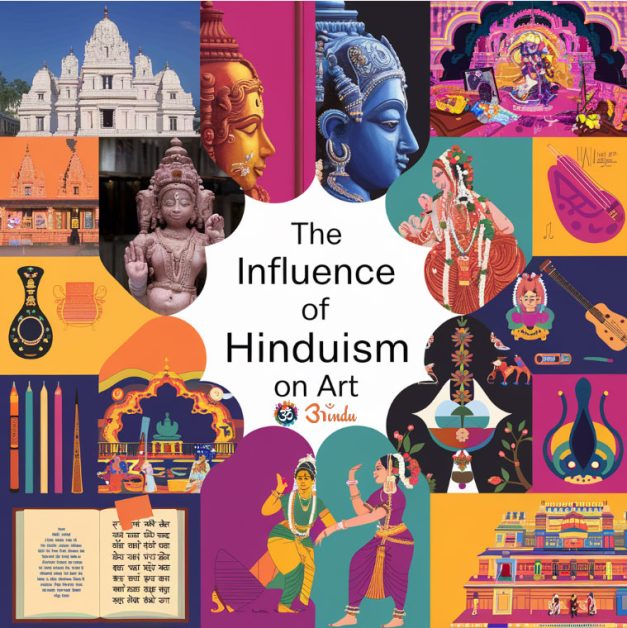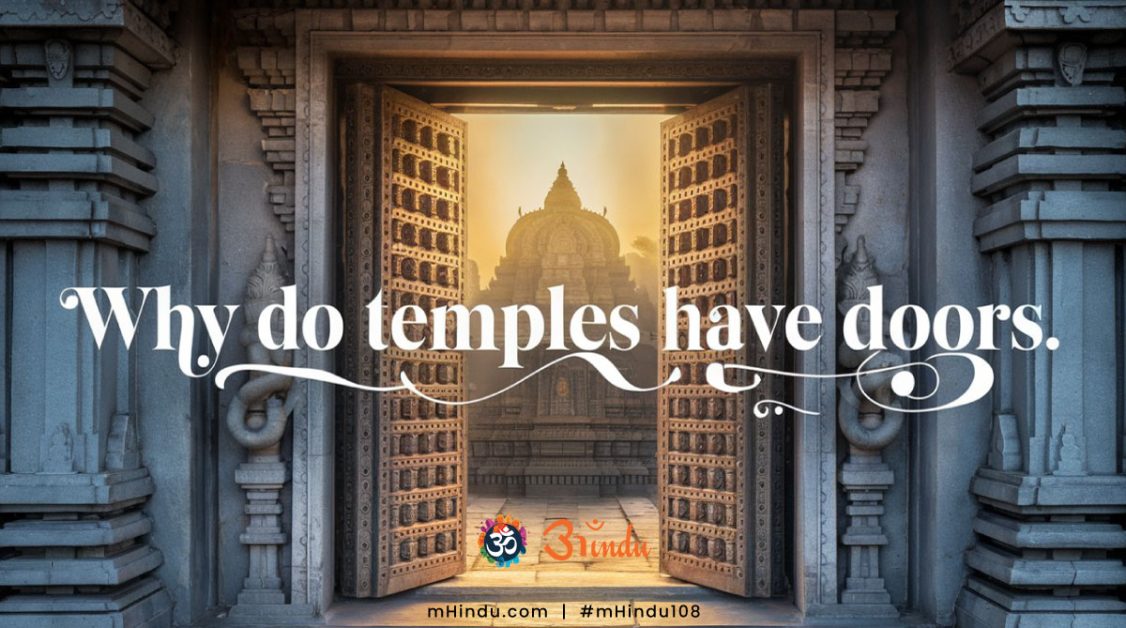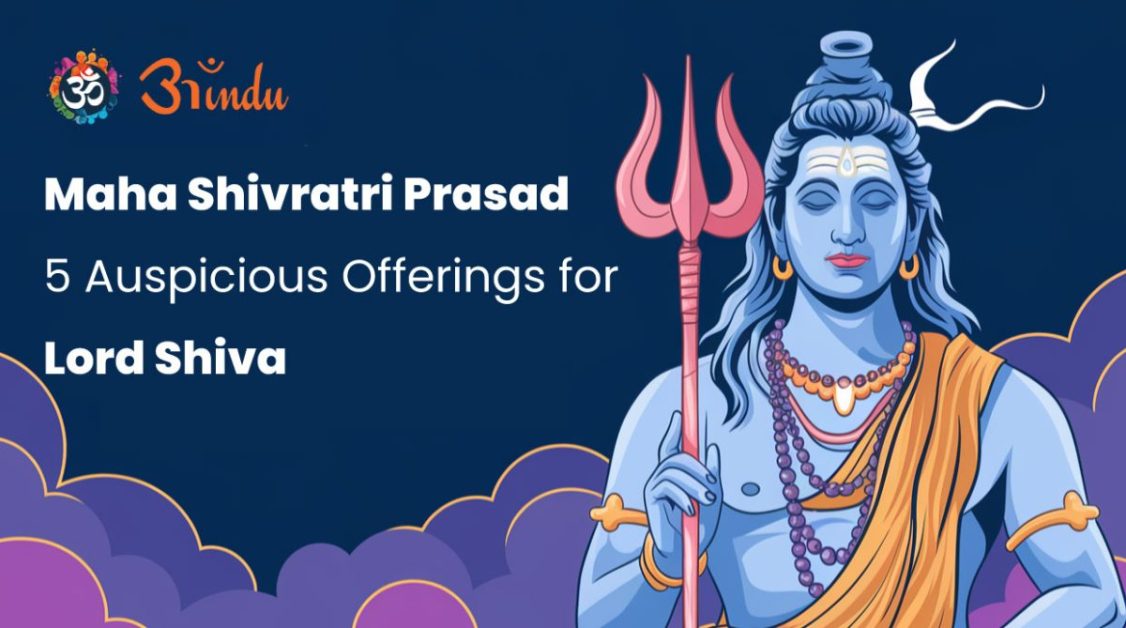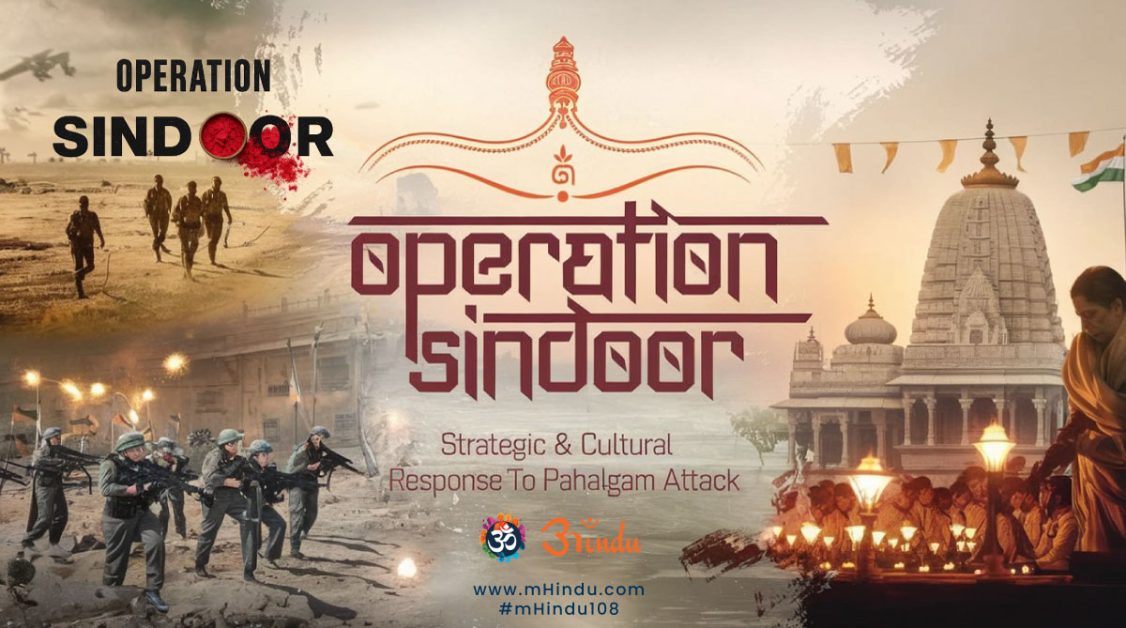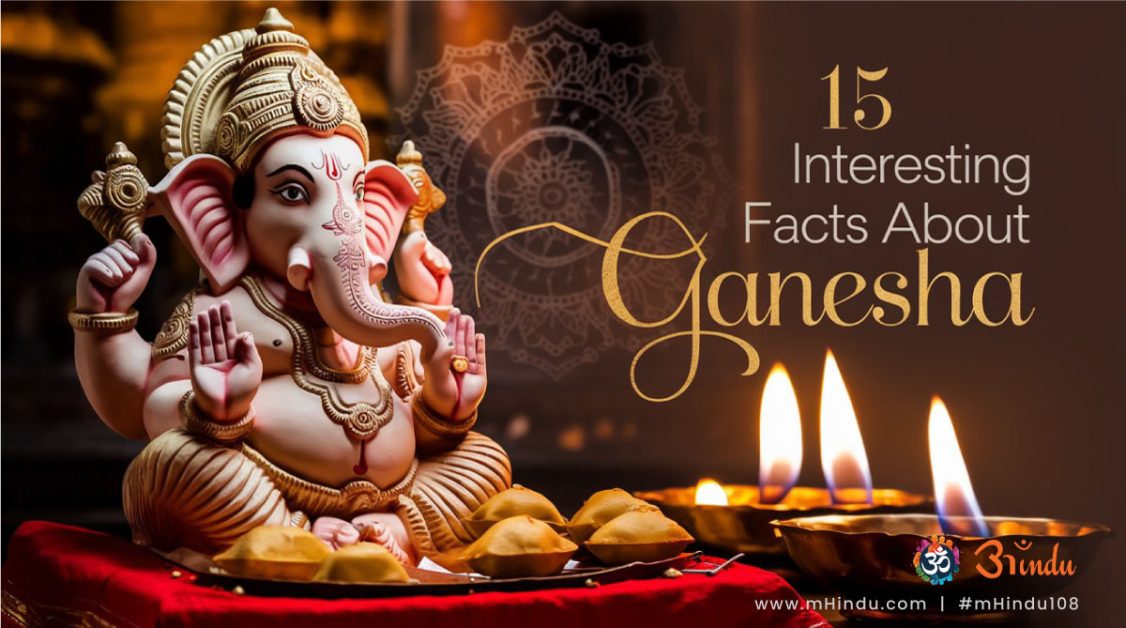
Before any puja begins, before any mantra is uttered, one name is always called first — Ganesha. The beloved elephant-headed deity, known as the remover of obstacles and the patron of intellect, is more than just a god of beginnings. He is a living philosophy, a bridge between devotion and wisdom.
Explore Blog Content
ToggleBut who is Ganesha really? Is he just the playful son of Shiva and Parvati? Or is he something far deeper — a symbol of inner control, an archetype of spiritual growth, and a mystery that unfolds through form, function, and folklore?
In this blog, we explore 15 fascinating, lesser-known facts about Ganesha. Each fact is a story, a sloka, a symbol — designed not just to inform, but to connect your heart with the eternal rhythms of Sanatan Dharma.
Who is Lord Ganesha and Why Is He So Loved?
Why is Ganesha so important in Hinduism?
Ganesha isn’t worshipped just because he removes obstacles. He is the embodiment of pragya (wisdom), bhakti (devotion), and shakti (power). His name means “Gana” (divine beings) and “Isha” (lord), making him Lord of the cosmic intelligences. By placing Ganesha first, we align with order before chaos, awareness before action, and clarity before confusion.
“Vighneshwaraya Varadaya Surapriyaya…” – Ganapati Atharvashirsha
What is the Significance of Ganesha in Hinduism?
Ganesha is the god who blesses beginnings. He is invoked before any venture, journey, or spiritual practice. He represents the primal energy that removes obstacles and clears the path. The symbolism of Ganesha in Hinduism is profound — the elephant head, broken tusk, mouse vehicle, and his mudras all convey deep messages about life, ego, intellect, and divine wisdom.
15 Interesting Facts About Ganesha
- Ganesha’s Head Symbolizes the Soul, His Body Represents Maya (Illusion) The large elephant head symbolizes the universal soul — vast, wise, and conscious. His human body represents the mortal world — full of attachments, desires, and illusions. Together, they remind us that even while living in illusion, we must stay connected to the divine within.
- The Story Behind His Elephant Head Isn’t Just One While the popular version says Shiva beheaded Ganesha and replaced his head with that of an elephant, other Puranas offer variations: one mentions an elephant-headed celestial being donating his head; another says Ganesha was born with the head of an elephant due to Parvati’s boon. This highlights the mythology and multiple dimensions of Ganesha’s symbolism.
- His Broken Tusk Reflects Spiritual Sacrifice The broken tusk is not just an aesthetic feature. It symbolizes sacrifice — he broke it to write the Mahabharata as Ved Vyasa dictated. Others say it signifies letting go of duality: holding on to what matters, discarding what doesn’t. This is a central point in understanding Ganesha symbolism.
- Ganesha Is Not Just a God — He Is a Mantra “Om Gan Ganapataye Namah” is not just a chant; it’s a vibration that clears mental and spiritual obstacles. It’s known to harmonize the left and right hemispheres of the brain and bring emotional balance.
- His Vehicle, the Mouse, Represents Ego The mouse (Mushak) represents the ego — small, hidden, restless. Ganesha riding the mouse means that one who is truly wise is always in control of their ego. It also signifies humility and accessibility.
- Ganesha Appears in Jain and Buddhist Traditions Too Ganesha transcends sects. He appears as Vinayaka in Buddhist Tantric texts and is venerated in Jain temples, especially in western India. In fact, some ancient Buddhist images of Ganesha predate classical Hindu iconography. This reflects his wide spiritual significance.
- There Are 32 Forms of Ganesha in Sanatan Dharma The Mudgala Purana describes 32 different forms — including Bala Ganapati (childlike), Ucchhishta Ganapati (bestower of boons), Heramba Ganapati (protector of the weak), and Vighna Ganapati (remover of obstacles). Each form has specific iconography, color, mudras, and meaning.
- The First Modak Was Made by Parvati Modaks are Ganesha’s favorite sweet. Legend says Goddess Parvati made the first one with rice flour, jaggery, and coconut to reward Ganesha’s loyalty. The shape of modak represents the wisdom within — sweet and rich.
- Ganesha Is the Patron of the Arts and Sciences He governs Buddhi (intellect) and Siddhi (spiritual power). That’s why students, musicians, writers, and business owners all seek his blessings. Ganesha is not only the remover of obstacles but also the bestower of inner strength and success.
- His Big Ears Teach Us to Listen More One of the simplest yet most powerful messages — listen more, talk less. His large ears signify openness to ideas, empathy, and learning. They filter noise from wisdom.
- The Ganesha Festival Was Revived by Lokmanya Tilak In 1893, Lokmanya Tilak turned Ganesha Chaturthi into a public celebration to unite Indians under colonial rule. What started as a spiritual gathering became a symbol of national awakening. Today, Ganesh Chaturthi is celebrated worldwide.
- Ganesha Has No One Fixed Form From two-armed to sixteen-armed, red to white to golden, childlike to warrior-like — Ganesha appears in many forms. Each reflects a specific aspect of his role as protector, teacher, or liberator. This variety reflects the richness of Ganesha symbolism.
- Ganesha is Ekadanta — the Single-Tusked One “Eka” means one, and “Danta” means tooth. Ekadanta is one of his most famous names. It represents the idea that the wise discard what is unnecessary (one tusk) and retain what is true. This is a major symbol of spiritual clarity.
- He Was the First Deity Worshipped in the Beginning of Time According to the Ganesha Purana, he was the first deity to be acknowledged during creation. That’s why he’s called Prathamesh (the first lord) and invoked before any other god. Ganesha is the origin and the remover of all obstacles.
- Even the Gods Worship Ganesha In several scriptures, Lord Shiva and Lord Vishnu are shown bowing to Ganesha before beginning cosmic tasks. This teaches that ego has no place in devotion — even gods show reverence to the remover of obstacles.
Summary
Ganesha is not just a god — he is a guide, a guru, and a living mantra. Each aspect of his form, every story in his name, and all his festivals carry deeper lessons. From ego to liberation, logic to emotion, he rules it all — with a modak in hand and wisdom in his eyes.
FAQs
Q1. Why is Ganesha worshipped first?
Ganesha is known as Vighnaharta — the remover of obstacles. Worshipping him first ensures the smooth flow of rituals, projects, and life events. It is a tradition followed across all branches of Sanatan Dharma.
Q2. What does Ganesha’s symbolism teach us?
Ganesha’s symbolism teaches us to balance intellect and emotion, control the ego, embrace humility, and seek inner wisdom. His form is a visual guide to spiritual practice.
Q3. Can Ganesha be worshipped at home daily?
Yes. Ganesha is one of the most accessible and forgiving deities. Daily worship with simple offerings like flowers, modak, or durva grass is considered auspicious.
Q4. What is the meaning of Ganapati mantra?
“Om Gan Ganapataye Namah” is a bija mantra that invokes Ganesha’s energy. It harmonizes the mind, grounds spiritual intent, and prepares one for inner transformation.
Q5. Why is Ganesha shown with different forms?
Each form of Ganesha represents different qualities, moods, and energies. These forms cater to different needs of devotees — from courage to abundance, intellect to spiritual focus.
Q6. How is Ganesh Chaturthi celebrated?
Ganesh Chaturthi is celebrated by bringing clay idols of Ganesha home, worshipping for 1 to 11 days, and immersing them in water. It symbolizes the cycle of birth, devotion, and surrender.
Q7. Is Ganesha connected with chakra healing?
Yes. Ganesha is associated with the Muladhara Chakra, the root chakra. Worshipping him stabilizes our foundation, enhances security, and grounds the spiritual journey.
Q8. Can children chant Ganesha mantras?
Absolutely. Ganesha is loved by children. Chanting his mantras helps improve memory, reduce anxiety, and promote spiritual discipline from a young age.


